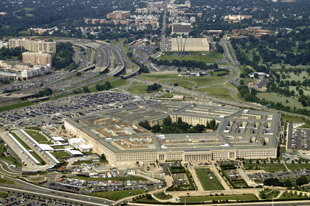P&E Technique: D.C.’s special flight rules
Do pilots rate it ‘most-feared’?
 It was a surprise when a colleague admitted he had stopped flying. The problem was that he had just moved to Frederick, Maryland, from a part of the country with fewer restrictions.
It was a surprise when a colleague admitted he had stopped flying. The problem was that he had just moved to Frederick, Maryland, from a part of the country with fewer restrictions.
To the north of Frederick is the United States presidential retreat at Camp David with airspace that on short notice grows in size when the facility is active, coming within four miles of the primary approach to the Frederick runways. To the south and east are not only Class B airspace over Baltimore and Washington, D.C., but a Special Flight Rules Area (SFRA) and a hard center core called the Flight Restricted Zone (FRZ). I say “hard” because if you are general aviation, you aren’t going there.
To help you be as cool as the locals, we call the SFRA the “siffra” and FRZ the “freeze,” as in, “general aviation is frozen out.” Class B, found around many of the nation’s largest airports, is still plain old Class B.
To see if my colleague’s concern was widespread I called the Aviation Adventures flight school with operations at two area airports near Washington—one at Manassas, Virginia, and one at Leesburg, Virginia. Both lie within the 30-nautical-mile, circular-shaped SFRA. (It is centered on Ronald Reagan Washington National Airport.)
Aviation Adventures officials said some of their renters and clients land at airports well outside of all Washington, D.C.-area airspace and drive the rest of the way, wanting nothing to do with the special rules airspace. Concern about the airspace is widespread. On a trip to California I expressed fear of the convenient yet precise Los Angles VFR routes above the city and was told by pilots at Channel Islands Aviation in Camarillo, California, that in their opinion the Washington-Baltimore airspace was more difficult. We took turns out-fearing one another’s airspace (see “P&E: Guns, Snakes, and LA Airspace,” August 2012 AOPA Pilot).
If you’re not from around the Washington, D.C. or Baltimore area, it’s hard to imagine how else you will learn the airspace without going to school, and that is exactly what you should do. If you plan to fly visually in the area it’s not a suggestion—it is an FAA requirement that you take the “DC Special Flight Rules Area” course online (www.faasafety.gov). It’s a short course and I just took it for the second time, given that rules for the Leesburg area changed in June 2014. The course is only 45 minutes long but will contribute immensely to peace of mind. It’s interactive, easy, and even fun. Really. If you fly on instrument flight rules you will still benefit from understanding how the system works.
There is no doubt Washington’s airspace can be tricky. Even if you plan on staying away from the Class B airspace you may find you violated the SFRA, which in some locations extends beyond the Class B boundaries. To the south, you can be 10 miles from the Class B airspace but violate the SFRA, while to the north, near Frederick, Maryland, you can be two miles outside of Class B airspace and still violate the SFRA. As a note on the Baltimore Washington Terminal Area Chart says, communication with air traffic controllers is required at all altitudes prior to entering the SFRA.
If you are a VFR pilot, it may seem intimidating to file a flight plan (on the ground, not in the air), mark it “IFR” when you are not instrument rated, and expect to pick up a discrete transponder code once in the air. It may be confusing to choose as your destination an airspace “gate” instead of an airport.
What the heck’s a gate? The SFRA is divided like slices of a pie and each one has a name. It helps controllers know the location of your entry or general direction of your departure. The FAA course has printouts of “cheat sheets” that help you use the airspace properly. The Baltimore Washington Terminal Area Chart has all the information needed to navigate the airspace, with a decluttered version on the back.
Just as the Camp David airspace can suddenly expand (with warning), the special rules airspace can quickly change its rules. That’s why checking notices to airmen before a flight into the airspace is important.
For example, the rules just changed in June 2014 when operating to and from Leesburg. Traffic pattern work at airports with control towers does not require a SFRA flight plan—you make your request to the tower. There are speed restrictions for VFR aircraft, as well, of 230 knots indicated airspeed within 60 to 30 nautical miles of Washington, D.C., and 180 knots indicated airspeed once within the SFRA.
There still are three airports buried within the most restricted airspace, and the FAA course covers special procedures needed to operate there.
If you have only one radio installed, you may want to bring along a portable radio. One radio needs to be tuned to monitor the emergency frequency of 121.5 MHz. There may be a warning given to you on that frequency that you are too close to airspace into which you have not been cleared.
Over the years more than 1,000 pilots have made either minor or major incursions, and some have ended up getting intercepted and directed to an airport —where the local sheriff was waiting.
Email [email protected]
Web: Find detailed information and charts online.
1,151: The number of pilots who have violated Washington, D.C., airspace from 2009 through mid-2014.


